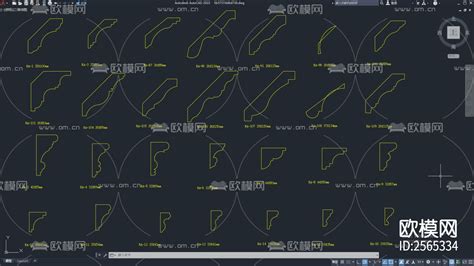Title: A Comprehensive Guide to CAD Line Programming
In the realm of ComputerAided Design (CAD), line programming serves as a fundamental aspect, allowing designers and engineers to create precise geometrical shapes and structures. By harnessing the power of programming, CAD users can automate repetitive tasks, enhance productivity, and ensure accuracy in their designs. In this guide, we'll delve into the intricacies of CAD line programming, exploring its principles, techniques, and practical applications.
Understanding CAD Line Programming:
CAD line programming involves the use of scripting or programming languages to generate and manipulate lines within a CAD environment. It provides users with a flexible and efficient means to create, modify, and analyze geometric entities such as lines, arcs, circles, and polygons.
Key Concepts and Techniques:
1.
Coordinate Systems:
CAD environments utilize various coordinate systems, such as Cartesian, polar, and relative coordinates, to define the position and orientation of geometric entities. Understanding these coordinate systems is essential for accurate line programming.
2.
Line Generation:
Lines in CAD are typically defined by their endpoints or by their equations in mathematical form. Line programming techniques involve specifying these endpoints or equations to generate straight lines of desired lengths and orientations.
3.
Line Modification:
CAD line programming allows for the dynamic modification of lines through operations such as stretching, lengthening, shortening, rotating, and mirroring. These operations enable users to adapt and refine their designs with precision.
4.
Constraints and Relationships:
CAD systems often incorporate geometric constraints and relationships to maintain design integrity. Line programming can involve the application of constraints such as parallelism, perpendicularity, and tangency to ensure geometric accuracy and consistency.
5.
Parametric Modeling:
Parametric modeling techniques enable the creation of intelligent CAD models by associating geometric entities with parameters and mathematical relationships. Line programming can be utilized to define these parameters and automate the generation of parametric designs.
Programming Languages and Platforms:
CAD line programming can be implemented using a variety of programming languages and platforms, depending on the specific CAD software being used. Some commonly employed languages and platforms include:
1.
AutoLISP:
AutoLISP is a dialect of the Lisp programming language used for customizing and extending AutoCAD functionality. It provides robust capabilities for line programming and automation within the AutoCAD environment.
2.
Visual Basic for Applications (VBA):
VBA is an extension of the Visual Basic programming language integrated into applications such as Autodesk Inventor and SolidWorks. It enables users to create macros and automate repetitive tasks, including line manipulation and generation.

3.
Python:
Python is a versatile programming language widely used in CAD automation and scripting. Python libraries such as pyautocad and ezdxf provide powerful tools for interacting with CAD software and performing line programming tasks.
4.
Parametric CAD Software:
Parametric CAD software such as SolidWorks, Autodesk Inventor, and PTC Creo incorporate builtin parametric modeling capabilities, allowing users to define geometric constraints and relationships directly within the graphical interface.
Practical Applications:
CAD line programming finds application across various industries and disciplines, including:
1.
Mechanical Engineering:
In mechanical design, line programming facilitates the creation of precise part geometries, assembly layouts, and toolpath generation for manufacturing processes such as CNC machining.
2.
Architecture:
Architects utilize line programming to generate building floor plans, elevations, and structural frameworks, enabling rapid iteration and visualization of design concepts.
3.
Electrical and Electronics Design:
CAD line programming aids in the layout of circuit boards, wiring diagrams, and enclosure designs, ensuring efficient placement of components and optimal routing of electrical connections.
4.
Urban Planning:
Urban planners utilize CAD line programming to develop site plans, road networks, and zoning maps, facilitating the design and analysis of urban infrastructure projects.
Guidelines for Effective CAD Line Programming:
1.
Plan and Prototype:
Before diving into line programming, it's essential to conceptualize the desired outcomes and prototype your code to test functionality and identify potential issues.
2.
Follow Best Practices:
Adhere to coding standards, documentation practices, and version control to maintain code readability, reusability, and collaboration among team members.
3.
Stay Updated:
Keep abreast of advancements in CAD software and programming languages, as new features and tools may enhance the efficiency and capabilities of your line programming workflows.
4.
Practice Iteration:
Continuously refine and optimize your line programming techniques through iterative experimentation and feedback from realworld usage scenarios.
5.
Collaborate and Share Knowledge:
Engage with the CAD community, participate in forums, and share your experiences and insights to foster collaboration and collective learning.
In conclusion, CAD line programming serves as a powerful tool for enhancing productivity, precision, and creativity in design and engineering endeavors. By mastering the principles, techniques, and best practices outlined in this guide, CAD users can unlock the full potential of line programming to realize their innovative visions and accomplish their design objectives with confidence and efficiency.
文章已关闭评论!
